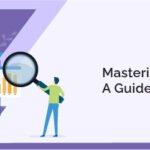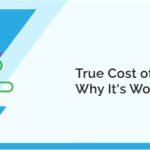In the ever-evolving realm of digital marketing, mastering the art of Search Engine Optimization (SEO) is crucial for ensuring your website’s visibility and success. Hiring a SEO company specializing in SEO services is crucial. On-page SEO plays a pivotal role in communicating with search engines and providing a seamless experience for users. In this comprehensive guide, we’ll explore the ultimate on-page SEO techniques to optimize your website and enhance its search engine rankings.
1. Keyword Research: The Foundation of On-Page SEO
Before diving into on-page optimization, it’s essential to conduct thorough keyword research. Identify relevant keywords and phrases that align with your content and user intent. Tools like Google Keyword Planner, SEMrush, or Ahrefs provide on-page SEO services to discover high-traffic keywords with reasonable competition. Strategically incorporate these keywords into your content, headings, and meta tags.
2. Craft High-Quality and Relevant Content
Content is the heartbeat of on-page SEO. An SEO company should specialize in creating high-quality, relevant, and valuable content that addresses the needs of your target audience. Google’s algorithms prioritize content that provides value, so focus on delivering informative, engaging, and well-structured material. Aim for in-depth content that thoroughly covers a topic and keeps users engaged.
3. Optimize Title Tags
Title tags are a critical on-page SEO element that directly influences click-through rates and search engine rankings. Craft compelling and descriptive title tags that accurately reflect the content of the page. Include your target keyword near the beginning of the title to signal its relevance to search engines. Keep titles concise, ideally under 60 characters, to ensure they display correctly in search results.
4. Write Compelling Meta Descriptions
While meta descriptions don’t directly impact rankings, they play a significant role in encouraging clicks. Write concise and compelling meta descriptions that summarize the content of the page and entice users to click. Including your target keyword in the meta description can also reinforce the relevance of your content to search engines.
5. Optimize Header Tags (H1, H2, H3, etc.)
Header tags structure your content and provide clarity for both users and search engines. Use a single H1 tag for the main title of your page, and employ H2, H3, and subsequent tags to organize content into sections. Include relevant keywords in your header tags to reinforce the topic’s importance to search engines.
6. Ensure Proper URL Structure
A clean and structured URL is not only user-friendly but also aids search engines in understanding the content hierarchy. Include relevant keywords in your URLs, separate words with hyphens, and keep them concise. A well-structured URL provides a clear indication of the page’s content and is more likely to be clicked by users.
7. Optimize Images with Alt Text
Images enhance the user experience, but search engines need additional information to understand them. Optimize your images by adding descriptive alt text that includes relevant keywords. This not only helps visually impaired users but also provides search engines with valuable context, contributing to better overall page optimization.
8. Implement Internal Linking Strategies
Internal linking connects different pages within your website, distributing link equity and enhancing the user’s journey. Create a logical internal linking structure by linking relevant pages together using descriptive anchor text. This not only aids navigation but also helps search engines understand the hierarchy and relationships between different pages on your site.
9. Enhance User Experience with Responsive Design
User experience is a significant factor in on-page SEO. Ensure your website is mobile-friendly and employs a responsive design that adapts to various devices. Google prioritizes mobile-friendly websites in its rankings, so optimizing for a seamless experience across all platforms is crucial.
10. Page Loading Speed Matters
Page loading speed directly impacts user satisfaction and search engine rankings. Use tools like Google PageSpeed Insights to analyze your website’s performance and identify areas for improvement. Compress images, leverage browser caching, and minimize unnecessary code to enhance page loading speed.
11. Secure Your Website with HTTPS
Website security is a ranking factor that should not be overlooked. Secure your website with HTTPS by obtaining an SSL certificate. Not only does this ensure the protection of user data, but it also signals to search engines that your site is trustworthy and secure.
12. Create an XML Sitemap
An XML sitemap is a roadmap for search engines, guiding them through the structure of your website and helping them discover and index content efficiently. Create and submit an XML sitemap to search engines, ensuring it is regularly updated as your website evolves.
Mastering on-page SEO techniques is a fundamental step toward improving your website’s visibility and attracting a targeted audience. By strategically implementing these 12 tips, you can optimize your content for search engines, enhance the user experience, and ultimately boost your website’s rankings. SEO is an ongoing process, and staying informed about industry updates is essential to adapting your strategies and maintaining a competitive edge in the digital landscape. Employing an experienced SEO company helps a lot with this and saves time which can be spent on other tasks.





